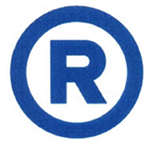Gerecht EU week 26
Merkenrecht. We beperken ons tot een wekelijks overzicht van de (voortgezette oppositie) beslissingen van het Gerecht EU. Ditmaal over:
A) Aldi / OHMI - Dialcos (dialdi) - Relevante factoren niet meegewogen
B) Repsol YPF / OHMI - Ajuntament de Roses (R) - Verwarringsgevaar door algehele overeenstemming
C) International Engine Intellectual Property Company / OHMI (PURE POWER) - Aangevraagd merk mist onderscheidend vermogen
D) MOL / OHMI - Banco Bilbao Vizcaya Argentaria (MOL Blue Card) - Door vergelijkbaar element 'blue' sprake van verwarringsgevaar
Gerecht EU 25 juni 2013, zaak T-505/11 (Aldi / OHMI - Dialcos (dialdi)) - dossier  A) Gemeenschapsmerk – Beroep ingesteld door de houder van het gemeenschapswoordmerk „ALDI”, voor waren en diensten van de klassen 3, 4, 7, 9, 16, 24, 25, 29, 30, 31, 32, 33, 34 en 36, strekkende tot nietigverklaring van beschikking R 1097/20102 van de tweede kamer van beroep van het BHIM van 5 juli 2011, waarbij is verworpen het beroep tegen de beslissing van de oppositieafdeling houdende afwijzing van de oppositie van verzoekster tegen de aanvraag voor inschrijving van het beeldmerk dat het woordelement „dialdi” bevat, voor waren van de klassen 29 en 30. Het beroep wordt toegewezen. De nietigheidsafdeling heeft niet alle relevante factoren (waaronder of aanvrager het onderscheidend vermogen heeft aangetoond) meegewogen.
A) Gemeenschapsmerk – Beroep ingesteld door de houder van het gemeenschapswoordmerk „ALDI”, voor waren en diensten van de klassen 3, 4, 7, 9, 16, 24, 25, 29, 30, 31, 32, 33, 34 en 36, strekkende tot nietigverklaring van beschikking R 1097/20102 van de tweede kamer van beroep van het BHIM van 5 juli 2011, waarbij is verworpen het beroep tegen de beslissing van de oppositieafdeling houdende afwijzing van de oppositie van verzoekster tegen de aanvraag voor inschrijving van het beeldmerk dat het woordelement „dialdi” bevat, voor waren van de klassen 29 en 30. Het beroep wordt toegewezen. De nietigheidsafdeling heeft niet alle relevante factoren (waaronder of aanvrager het onderscheidend vermogen heeft aangetoond) meegewogen.
91. In addition, the Opposition Division considered that the goods at issue were identical, as was recalled in the contested decision, without the Board of Appeal’s taking a final decision in that regard (see paragraph 40 et seq. above). That implies, in accordance with the case-law cited at paragraph 23 of the present judgment, that, if there is to be no likelihood of confusion, the degree of difference between the marks at issue must be high (see, to that effect, judgment of 29 January 2013 in Case T-283/11 Fon Wireless v OHIM – nfon (nfon), not published in the ECR, paragraph 69).
92. However, in such circumstances, it was for the Board of Appeal, in order to rule on the applicability of Article 8(1)(b) of Regulation No 207/2009 and on the existence of a likelihood of confusion, to assess all the relevant factors in that regard and, in particular, to determine whether the applicant had demonstrated the enhanced distinctive character acquired through use of the earlier mark, or even its renown.
93. It follows that the applicant’s single plea in law must be accepted and the contested decision annulled in its entirety.
Gerecht EU 27 juni 2013, zaak T-89/12 (Repsol YPF / OHMI - Ajuntament de Roses (R)) - dossier 
 B) Gemeenschapsmerk – Beroep tot vernietiging ingesteld door de aanvrager van het beeldmerk met letter „R” voor waren en diensten in de klassen 25, 35 en 41, tegen beslissing R 1815/20102 van de tweede kamer van beroep van het Bureau voor harmonisatie binnen de interne markt (BHIM) van 5 december 2011, waarbij het beroep tegen de beslissing van de oppositieafdeling tot gedeeltelijke weigering van de inschrijving van dit merk in het kader van de oppositie van de houder van het nationale beeldmerk met letter „R” voor waren en diensten in de klassen 6, 9, 16, 25, 35. Het beroep wordt afgewezen. Door de totaalindruk van de merken is verwarringsgevaar te duchten. Op andere blogs: MARQUES
B) Gemeenschapsmerk – Beroep tot vernietiging ingesteld door de aanvrager van het beeldmerk met letter „R” voor waren en diensten in de klassen 25, 35 en 41, tegen beslissing R 1815/20102 van de tweede kamer van beroep van het Bureau voor harmonisatie binnen de interne markt (BHIM) van 5 december 2011, waarbij het beroep tegen de beslissing van de oppositieafdeling tot gedeeltelijke weigering van de inschrijving van dit merk in het kader van de oppositie van de houder van het nationale beeldmerk met letter „R” voor waren en diensten in de klassen 6, 9, 16, 25, 35. Het beroep wordt afgewezen. Door de totaalindruk van de merken is verwarringsgevaar te duchten. Op andere blogs: MARQUES
54 En outre, retenir cet argument aurait pour effet de neutraliser le facteur tiré de la similitude des marques au profit de celui fondé sur le caractère distinctif de la marque nationale antérieure auquel serait accordé une importance excessive. Il en résulterait que, dès lors que la marque nationale antérieure n’est dotée que d’un faible caractère distinctif, un risque de confusion n’existerait qu’en cas de reproduction complète de celle-ci par la marque dont l’enregistrement est demandé, et ce quel que soit le degré de similitude entre les signes en cause. Un tel résultat ne serait toutefois pas conforme à la nature même de l’appréciation globale que les autorités compétentes sont chargées d’entreprendre en vertu de l’article 8, paragraphe 1, sous b), du règlement n° 207/2009 (voir arrêt PAGESJAUNES.COM, point 53 supra, point 71, et la jurisprudence citée).
55 Il ressort de ce qui précède que, au vu de l’identité des produits et des services en cause et de la similitude globale des marques en conflit, la chambre de recours n’a pas commis d’erreur en concluant à l’existence d’un risque de confusion, même si elle a conclu à tort à l’existence d’une similitude importante entre les marques en conflit et même si la marque antérieure présente un caractère faiblement distinctif.
56 Cette conclusion n’est pas remise en cause par les autres arguments de la requérante.
Gerecht EU 27 juni 2013, zaak T-248/11 (International Engine Intellectual Property Company / OHMI (PURE POWER)) - dossier C) Gemeenschapsmerk – Nietigverklaring van beslissing R 2310/20102 van de tweede kamer van beroep van het Bureau voor harmonisatie binnen de interne markt (BHIM) van 15 februari 2011, waarbij is verworpen het beroep tegen de beslissing van de afdeling „Merken en register” houdende weigering van inschrijving van het woordmerk „PURE POWER”, voor waren van klasse 12. Het beroep wordt afgewezen. Het aangevraagde merk mist elk onderscheidend vermogen voor (onderdelen van) motoren. Ook op de MARQUES-blog.
39 In the light of all of the foregoing considerations, it must be held that the Board of Appeal was justified in concluding that, in so far as the relevant public was led to perceive the semantic content of the sign PURE POWER as providing information on the very nature of the goods at issue, in that engines and engine parts produce ‘sheer energy’ or ‘energy that is free from pollutants’, and not as indicating the commercial origin of those goods, that sign did not allow the goods at issue to be distinguished from those of other undertakings.
40. Consequently, the Board of Appeal acted correctly in law in concluding that the mark applied for was devoid of distinctive character within the meaning of Article 7(1)(b) of Regulation No 207/2009.
The plea in law alleging infringement of the ‘general principles of trade mark law’
53. Consequently, the applicant’s arguments based on the earlier, possibly contrary, practice of OHIM or national authorities cannot be accepted.
54. The present plea in law must therefore be rejected and, consequently, the action must be dismissed in its entirety.
Gerecht EU 27 juni 2013, zaak T-367/12 (MOL / OHMI - Banco Bilbao Vizcaya Argentaria (MOL Blue Card)) - dossier  D) Gemeenschapsmerk – Beroep ingesteld door de aanvrager van het woordmerk „MOL Blue Card” voor onder meer diensten van de klassen 35 en 36, en strekkende tot vernietiging van beslissing R 2532/20112 van de tweede kamer van beroep van het Bureau voor harmonisatie binnen de interne markt (BHIM) van 30 mei 2012 houdende vernietiging van de beslissing van de oppositieafdeling tot afwijzing van de oppositie ingesteld door de houder van de gemeenschapswoordmerken „BLUE”, „BLUE BBVA” en „TARJETA BLUE BBVA” voor diensten van de klassen 35 en 36. Het beroep wordt afgewezen. De merken (met het element 'blue') zijn vergelijkbaar waardoor er sprake is van verwarringsgevaar.
D) Gemeenschapsmerk – Beroep ingesteld door de aanvrager van het woordmerk „MOL Blue Card” voor onder meer diensten van de klassen 35 en 36, en strekkende tot vernietiging van beslissing R 2532/20112 van de tweede kamer van beroep van het Bureau voor harmonisatie binnen de interne markt (BHIM) van 30 mei 2012 houdende vernietiging van de beslissing van de oppositieafdeling tot afwijzing van de oppositie ingesteld door de houder van de gemeenschapswoordmerken „BLUE”, „BLUE BBVA” en „TARJETA BLUE BBVA” voor diensten van de klassen 35 en 36. Het beroep wordt afgewezen. De merken (met het element 'blue') zijn vergelijkbaar waardoor er sprake is van verwarringsgevaar.
58. In the present case, the Board of Appeal rightly found, in paragraph 38 of the contested decision, that the element ‘blue’, to the extent that it constitutes in itself the earlier mark, still has an independent distinctive role in the mark MOL Blue Card, without necessarily constituting the element dominating the overall impression created by that mark (see, to that effect, judgment of 12 November 2008 in Case T‑281/07 ecoblue v OHIM – Banco Bilbao Vizcaya Argentaria (Ecoblue), not published in the ECR, paragraph 33). The element ‘blue’ must accordingly be taken into account when assessing the similarity of the marks at issue and the likelihood of confusion. The applicant contests that conclusion, without however putting forward arguments or evidence capable of calling it into question in the present case.
59. It follows that the dissimilarity between the marks at issue which is asserted by the applicant is not sufficient to counteract the similarity deriving from the identity of the element ‘blue’ in the marks at issue. The Board of Appeal therefore rightly found that the marks at issue were similar.
60. In the light of the foregoing, with regard to the comparison of the marks, the Board of Appeal’s findings must be endorsed.
The likelihood of confusion
62. In the present case, it follows from the foregoing that the services in question are identical, the marks at issue are visually similar in that they contain an identical word, ‘blue’, phonetically similar to a very low degree and conceptually similar to a certain extent, that the common element ‘blue’ still has an independent distinctive role in the contested mark and that the relevant public is made up of the average consumer who is reasonably well informed and reasonably observant and circumspect. Accordingly, the Board of Appeal did not err in finding that there was a likelihood of confusion.63. In the light of all the foregoing, the single plea in law, alleging infringement of Article 8(1)(b) of Regulation No 207/2009, must be rejected. Accordingly, the action must be dismissed.





















































































